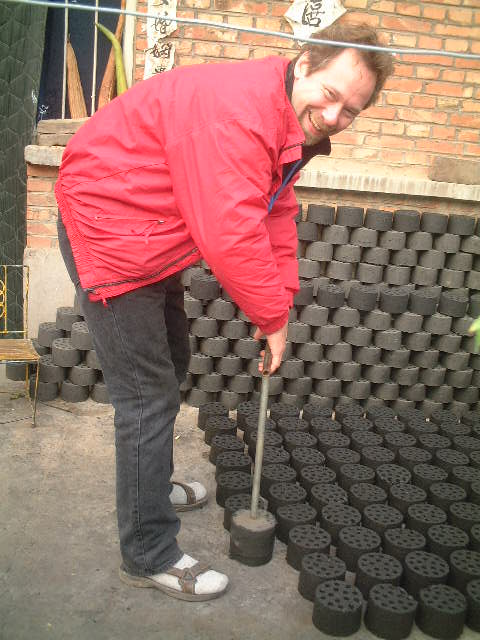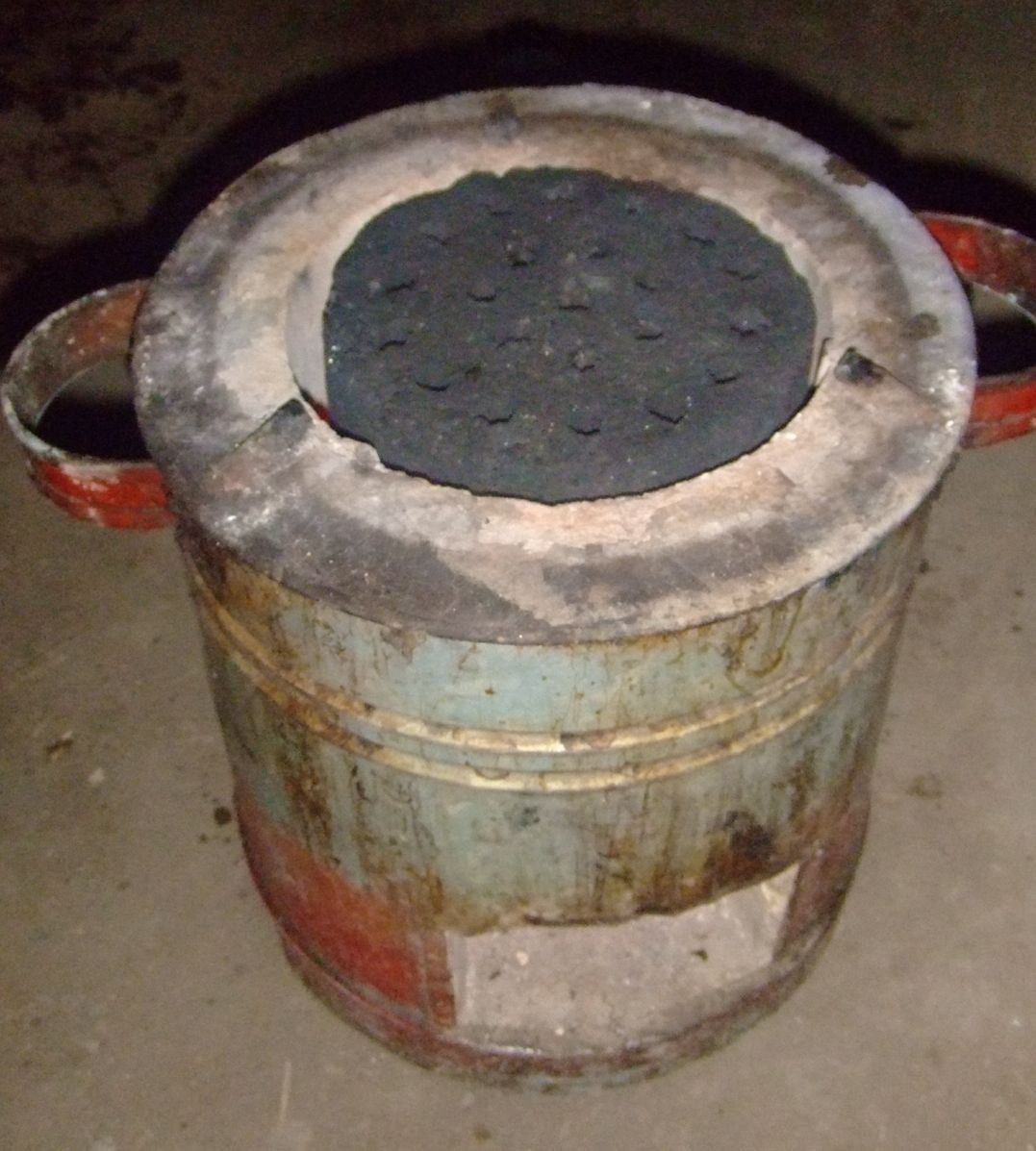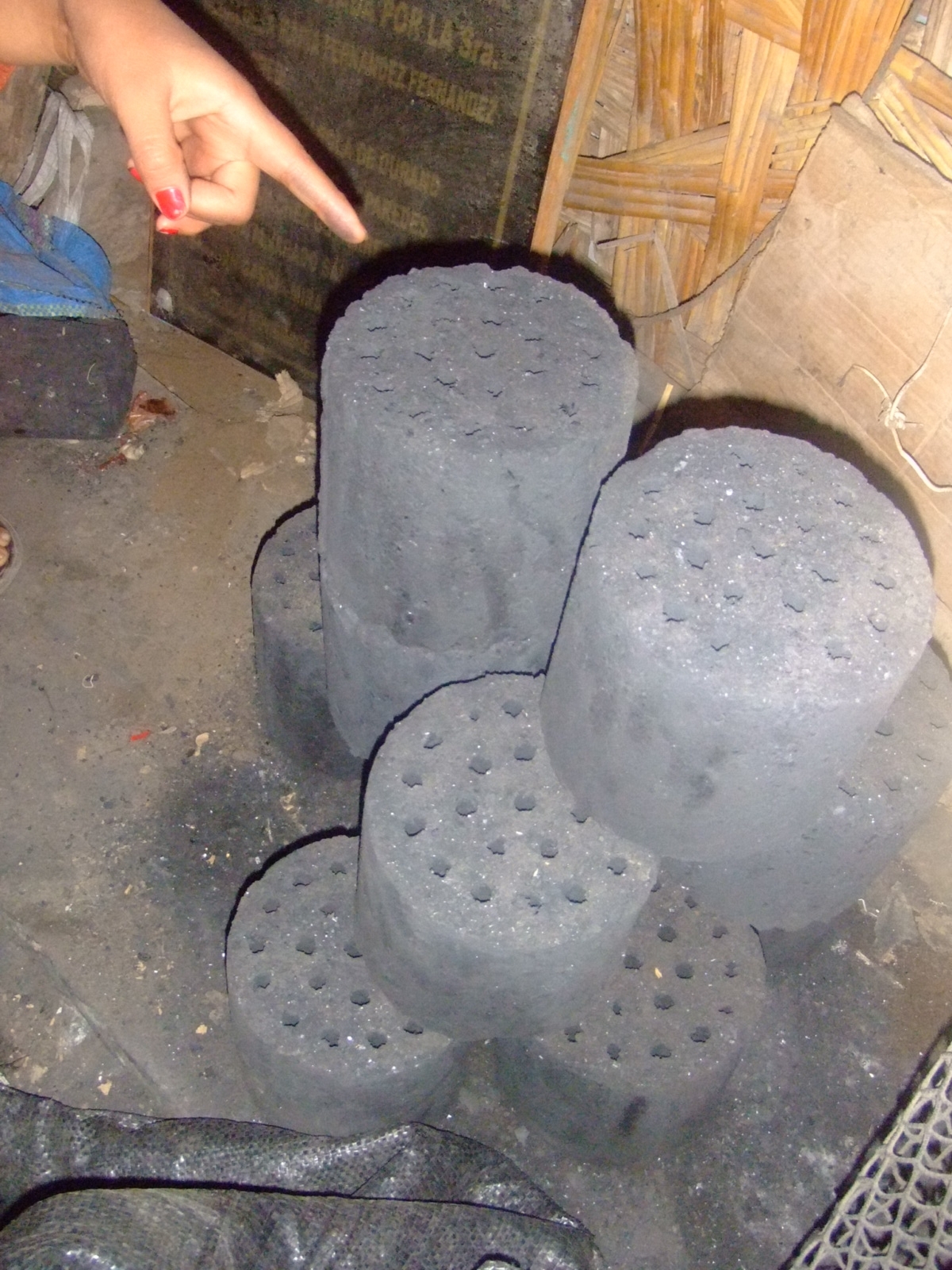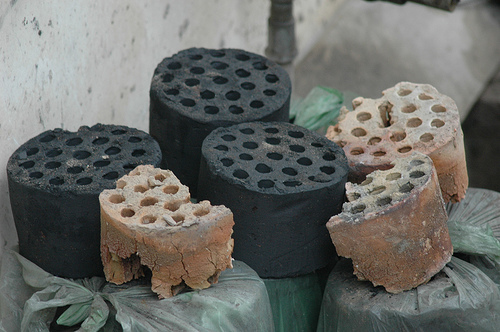Manually-operated biomass pelletizer - clay as a binder?
Charlie Sellers, May 10, 2008

Bravo! Every densification technique is a boon for all of us - ones of different sizes, made with different materials, for different local technology levels, etc.
Did I miss the end result of recent binder conversations? The part that seems to still be missing these days is good very cheap binders - just too much weight percent of anything seems needed to fill the gaps and wet the surfaces of every bit of biomass (obviously the more compression the better, if only to get the binder and biomass in closer contact thus reducing the binder amount dramatically). I won't do food products, usually think that tree saps and such are too hard to extract, and paint is certainly worth a try but you still still need that press and this is a limited resource available in the first world only... and can I presume that it is clay that Kingsford and most commercial operations use around the world?
Attached photo is me making coal briquettes in China (called honeycomb coal there, with a nice ratio of open area to fuel area) - it was just a mushy wet pile and you drove a simple shovel/die thing into it that had a lever to push out the firm briquette, then it just dried in the sun in the front yard of homes. In every neighborhood there was also some dude in a yard with a big pile of coal dust and a cement block making machine, just churning these out. I see them - just the briquettes, and NEVER made from charcoal dust - in Peru and Guatemala - just used by street cafes because of the bad smell and danger, in a special ceramic cylinder lined welded stove (other photos).


No one says how much clay is needed, but the batch I made from coffee grounds the other day obviously had too little - I vacuum pressed it at a straight 14 lbs/in2 at sea level (100 kPa - very little - you can go more with this wood press by concentrating, but throughput goes down linearly) and it was way too crumbly though you don't always need transportability. I'll try again and keep notes - I use potter's clay for now.
Does anyone have simple notes (before I collect and post my own data) on the impact of the major variables, assuming a basic clay - water needed, weight percent of clay added, end density (biomass, so energy content, or total), and pressure?
Testing pistachio shells today in a commercial Reed TLUD cooking stove - a decent bulk density for a long burn on a batch load (175 grams in this stove - but depends on the amount of charcoal produced and it seems like a lot), excellent angle of repose for great flow characteristics in a hopper or tube, should be good energy density, and perhaps available somewhat locally (California, and maybe Iran).
 Vietnam Honeycomb Coal
Vietnam Honeycomb Coal
When I was just in very far north Vietnam I found honeycomb coal as well, and this one photo really shows the durability of the "ash" - only in China and Vietnam was cooking with these so prevalent that the streets had this hard clay rubble from them everywhere and it was a big component of landfills.
Charlie
csellers42@yahoo.com
